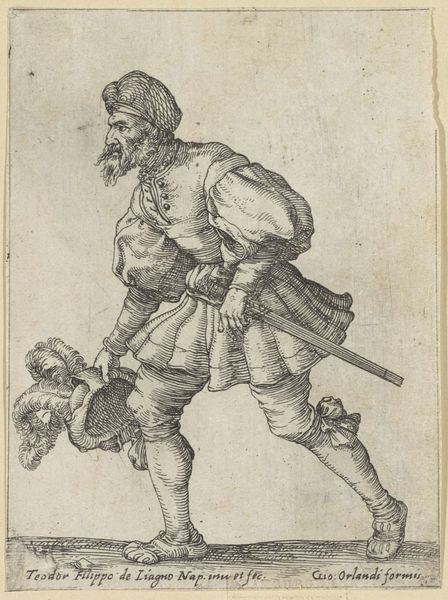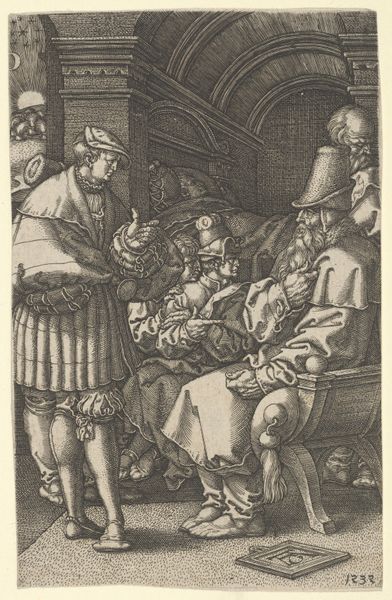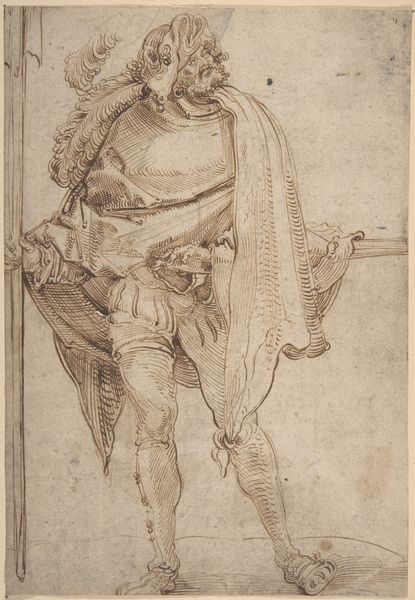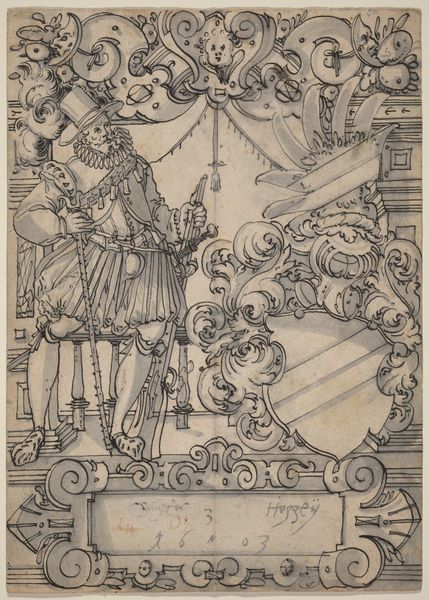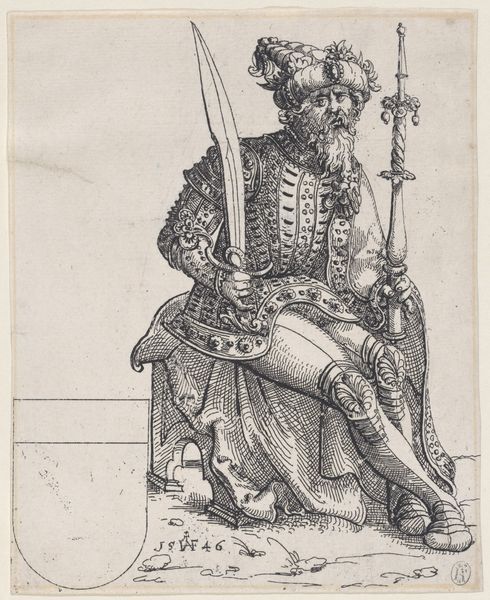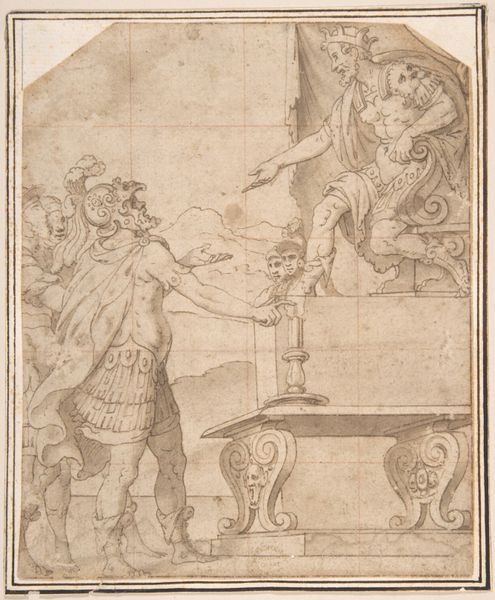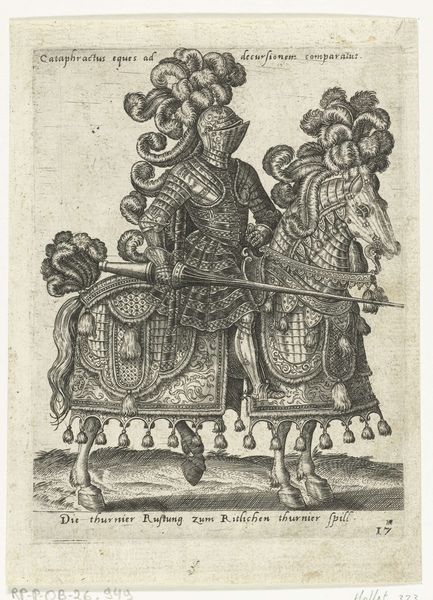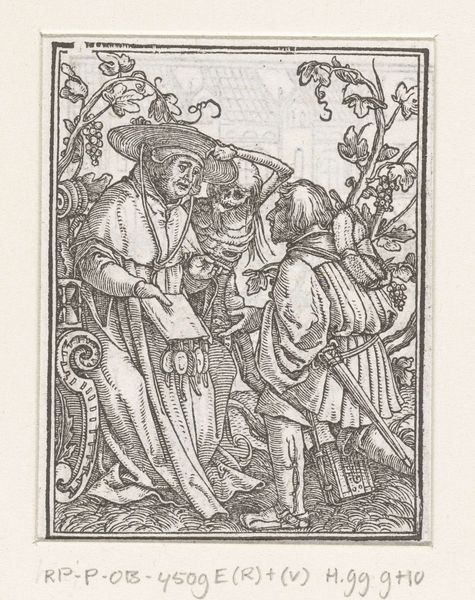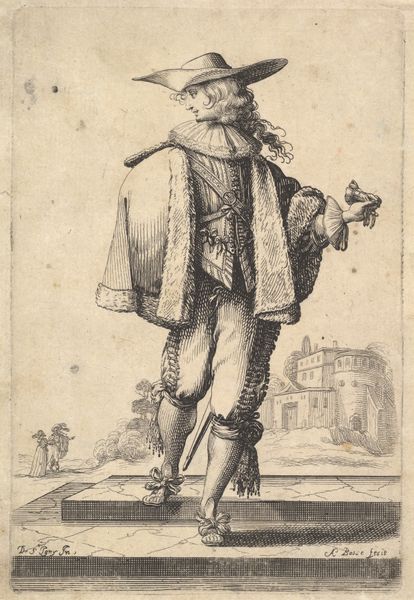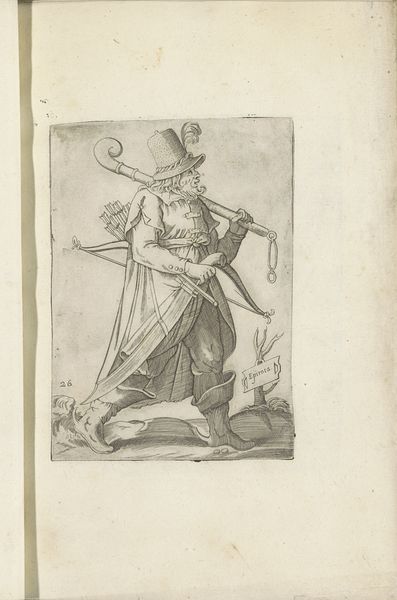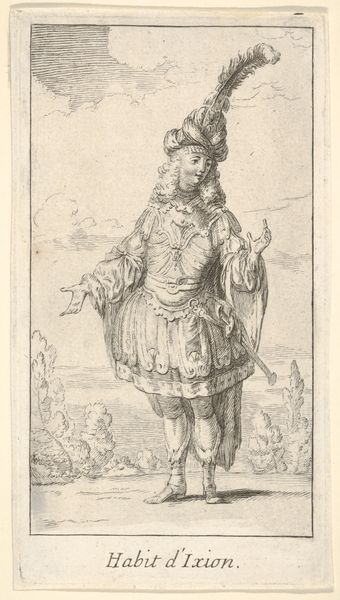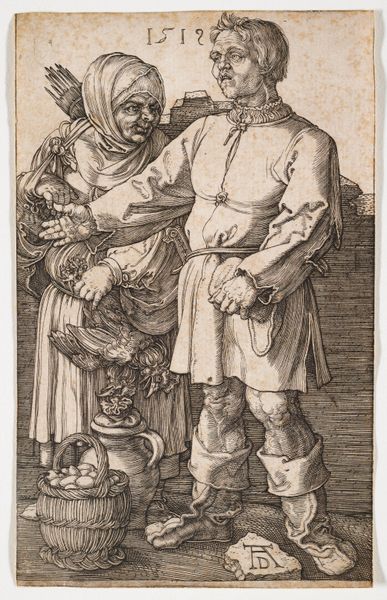
Design for Stained Glass: A Halbardier by an Unfinished Coat of Arms 1565 - 1585
0:00
0:00
drawing, print, ink, pen
#
drawing
# print
#
figuration
#
ink
#
pen
#
history-painting
Dimensions: 12 1/8 x 8 5/16 in. (30.8 x 21.1 cm)
Copyright: Public Domain
Editor: Here we have Hans Jakob Plepp's "Design for Stained Glass: A Halbardier by an Unfinished Coat of Arms," made between 1565 and 1585, using pen and ink. It's a detailed drawing, but the stark contrast of finished versus unfinished elements creates an interesting tension. What do you make of its formal composition? Curator: Formally, the drawing strikes me as an exercise in duality. We see the halbardier, meticulously rendered with cross-hatching defining volume and texture, positioned rigidly beside the blank heraldic shield. The tension isn't just in the "finished versus unfinished," but in the juxtaposition of representation and pure form. Editor: I see what you mean about the contrast! The halbardier feels so assertive, but the shield is passive and waiting. Do you think the blank shield suggests something about the historical context, or perhaps something more about the piece itself as a design object? Curator: It compels one to ponder the semiotics of incompleteness. The absence of heraldic devices calls into question the very notion of inherited identity and status. Consider the masterful way Plepp renders the textures - the folds of the clothing, the glint of metal. In comparison, the shield, although embellished with intricate swirls, lacks substance without its emblems. It's a game of presence and absence, demanding the viewer complete the intended idea. Editor: That's a really interesting interpretation. I hadn't thought of it in terms of presence and absence, but it makes sense given how meticulously other areas are defined. Curator: Indeed. By concentrating on the internal syntax of the artwork—line, form, contrast—we unravel its symbolic possibilities beyond conventional interpretations. Editor: It's fascinating to see how the interplay of form and absence creates so much meaning! I’ll definitely be more attentive to the artist's choices regarding those formal elements going forward. Curator: And I will consider more closely how the viewer completes the artist's work, thanks to your initial response to that duality.
Comments
No comments
Be the first to comment and join the conversation on the ultimate creative platform.
